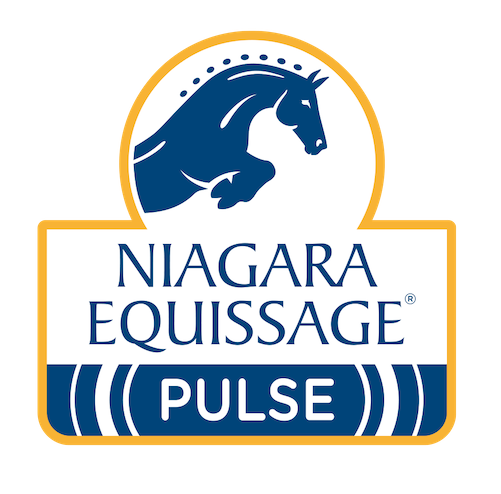Horse Wounds / Cuts
There are many different types of horse cuts and wounds. For example trauma can cause puncture, avulsion (flap of skin), incised, lacerated, abrasion or shear wounds.
The immediate response of a wound is to clot (coagulation cascade). Vasoconstriction and tissue retraction also help to prevent bleeding. The next stage is an inflammatory response, followed by a complex healing process.
Can Niagara Equissage help with horse cuts and wounds?
Yes, in general terms by way of promoting healthy circulation and efficient working of the lymphatic system (which is the “First Aid” kit of the horse).
As Niagara Equissage provides a massage and promotes circulation then obviously do not use until the natural clotting process has been effected. Ideally let 24 hours elapse. In the case of larger wounds then let common sense prevail as to the risk of possibly causing bleeding by using Niagara Equissage too soon.
Usually there is resultant swelling to a wound which Niagara Equissage is well-known for in its effectiveness in combating.
It is safe to use the leg boot for lower limb wounds provided there are no sutures (wait until these are removed) although it is recommended that if it has not been necessary to cover the wound to do so prior to use of the leg boot to guard against the risk of any debris being “vibrated” into the wound particularly if it is still “moist”.
Injured limbs are prone to filling due to lack of movement (the lymph fluid relies on muscle movement to pump it around the body) – Niagara Equissage is proven to aid lymphatic drainage.
As a precaution antibiotic treatment is usually effected to guard against infection so Niagara Equissage will help eliminate the resultant toxins.
Application
Use the Back Pad on a setting between No.2-No.4 to provide gentle stimulation rather than a “surge” effect. Nature automatically increases the blood supply to an injury site so you do not want to add to the congestion by promoting localised blood circulation. A low setting will work in harmony with nature.
If using the leg boot for a lower limb or foot injury, again a lower setting is all that is required. Cuts and wounds can be tender, however shallow, due to the number of nerve endings that are damaged.
Point to Note: Whilst some horse cuts and wounds can readily be treated by the owner, any wound that is in close proximity to a tendon or joint should be examined by a vet as there is potential for the underlying structures to be involved leading to infection.

Testimonials
See All- Myerscough Racing, Ireland
After spending time working in many top yards around the globe, I have found Brandes Formula to be best product I have ever come across to bring a horse back to full health! Any horses that are not thriving seem to improve almost immediately from being put on this stuff. It clears out any mucus in their lungs, and after racing, the amount of time it takes for my horses to recover has halved and recuperation time after racing is minimized. My horses now look great and I would have no problem in recommending this product to anyone.
- Racehorse Trainer in England
We have used Brandes Formula for 12 months now and have been extremely pleased with the way our horses have run in that time. They have looked well in their coats and performed consistently on the track. It has definitely helped maintain their good health and improved the health of horses that come to us. I believe that this is one of the best products we have ever used for maintaining the well being of horses that are in rigorous training.
- “Our Niagara Equissage helps us keep our horses in top condition and prepare them for competition. The Hand Unit is great for people too.”

